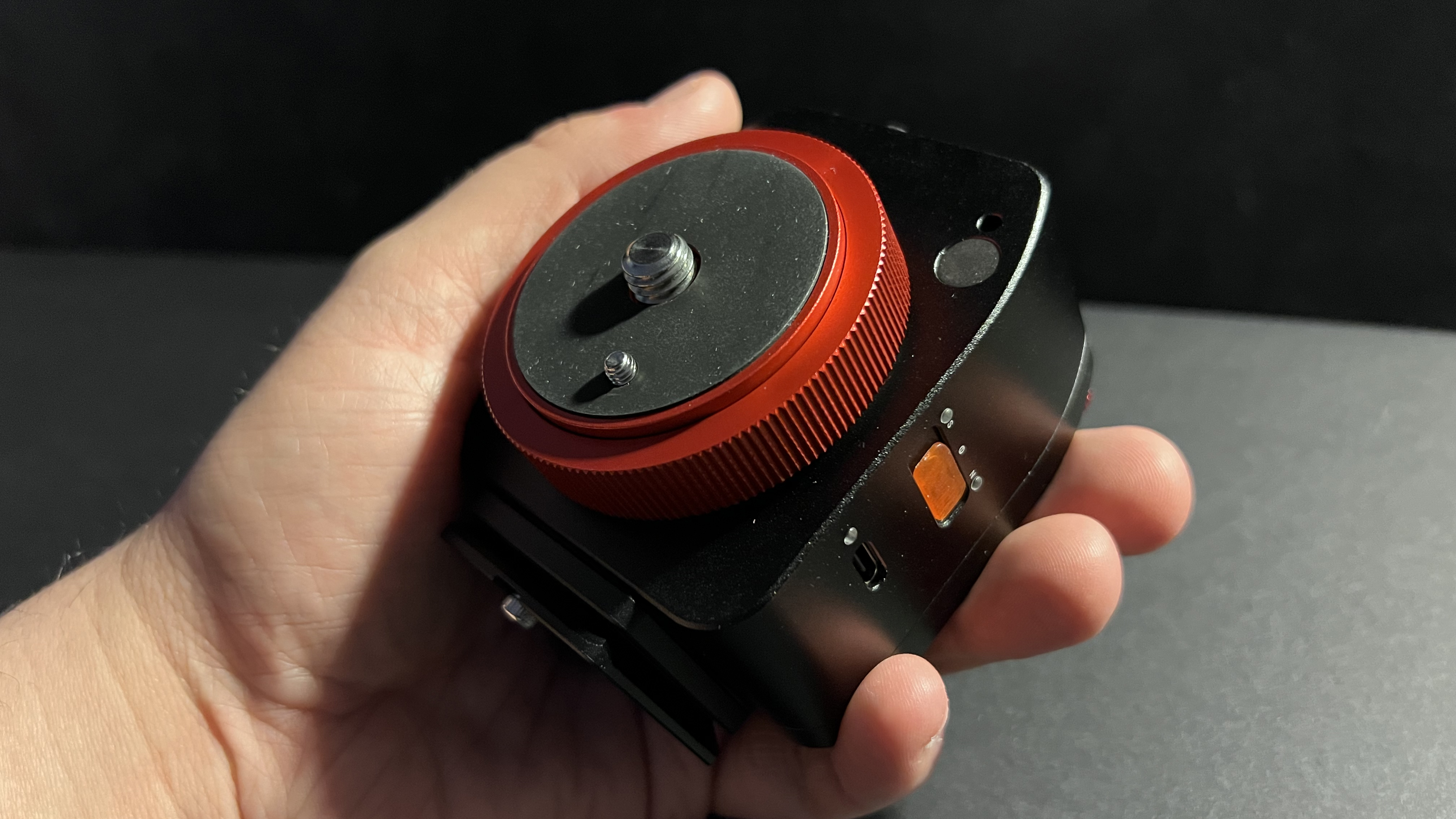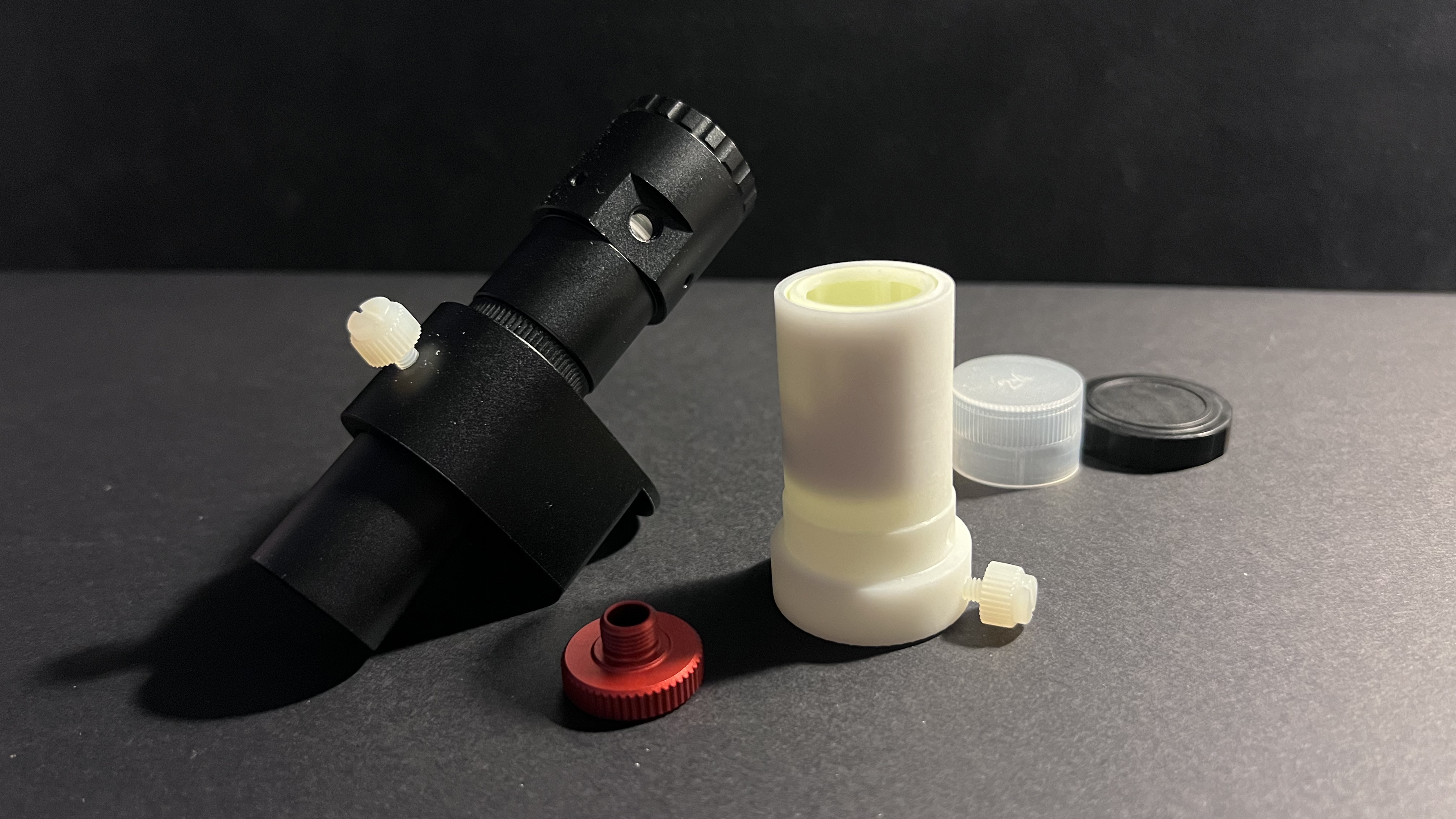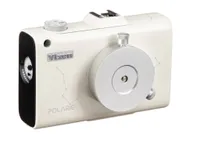Digital Camera World Verdict
A versatile star tracker with both compactability and versatility in mind. An ideal candidate for landscape astrophotography is within an affordable price bracket. Inclusive of a modern, sophisticated approach to polar alignment to track the stars in a small amount of time. From $2099 at Move Shoot Move
Pros
- +
Portable design enables on-the-go landscape astrophotography, suitable for travel and backpacking to remote locations..
- +
Adaptive technologies, including laser setup, simplify the process of polar alignment, reducing setup time.
- +
Durable ergonomics and build, allowing for sufficient payload of larger, wider-angle lenses.
- +
Affordable star-tracking option, boasting quality ergonomics and the ability to track the sky for longer durations.
Cons
- -
The power and tracking buttons are not the easiest to operate
- -
Would benefit from an external clock utility, housed in the polar scope, enabling a more accurate alignment.
- -
Clearer instructions for attachment of laser to the tracker and additional attachments.
- -
Payload restricting use of heavier, telephoto lenses and use for deep-space astrophotography.
Why you can trust Digital Camera World
From $229 at Move Shoot Move
Astrophotographers attach their cameras to star‑tracking mounts to counteract Earth’s rotation. Because the planet turns, stars drift across the field of view; in exposures longer than roughly 30 seconds, they form noticeable trails. A tracker rotates the camera at the same rate as the sky, only in the opposite direction, so the stars stay fixed and sharp.
To achieve this, the tracker must be polar‑aligned. Its axis is aimed at the celestial pole: Polaris (the north celestial pole) for observers in the Northern Hemisphere, or a point near Octantis (the south celestial pole) for those in the Southern Hemisphere. Built‑in polar scopes or mobile‑app overlays help match the reticle to familiar constellations and asterisms.
After alignment, you choose a drive rate that matches your target. Standard sidereal speed follows the stars; solar and lunar rates compensate for the Sun's or Moon’s slightly different motion. Some devices, such as the Vixen Polarie, even offer a half‑sidereal setting that keeps both foreground scenery and background stars acceptably sharp in a single shot.
Accurate tracking makes multi‑minute and on heavier equatorial mounts, multi‑hour exposures possible. Stacking these long integrations dramatically improves the signal‑to‑noise ratio, bringing out faint detail in deep‑sky objects while suppressing image noise.
The MoveShootMove Nomad is a popular choice amongst the astrophotography community in terms of portable approaches to star tracker technology. Current contenders on the market involve multiple components, requiring a more elaborate understanding of polar alignment and setup. The Nomad breaks boundaries as a portable solution, where size is no object in providing payload as a unit purely designed for landscape astrophotography. Not only is the NOMAD a desired tool in the astrophotographer’s kit bag, but it is also well adapted to a number of travel applications: from overseas assignments and long-distance photo shoots.
MSM Nomad: Specifications
Tracking Modes | North and South Hemisphere Star Tracking |
Battery Life | 6.46 Wh. 5 hours approx. Option to connect to an external power bank/source |
Input Voltage | DC 5.0V 1.0A Max |
Maximum Payload Capacity | 7.7lb (3.5kg) |
Operating Tempreature | -5’C - +45’C (No condensation) |
Material | Anodised Aluminium, CNC Machined |
Body base connection | V-style dovetail - compatible with Arca-Swiss style mounting options |
Dimensions | 3.5 x 2.6 x 2.16”. (89 x 67 x 55mm) |
Weight | 0.95lb (430g) + rechargeable Li-Poly battery |
MSM Nomad: Price
For its level of compactability, aesthetic, design, and purpose - I would rate this as the best value example of a star tracker listed on the market, compared to other variants within a similar price bracket. The MoveShootMove Nomad also offers a number of included accessories with the unit.
You can buy the Nomad in a range of kit options directly from Move Shoot Move, starting from $230.
The best camera deals, reviews, product advice, and unmissable photography news, direct to your inbox!
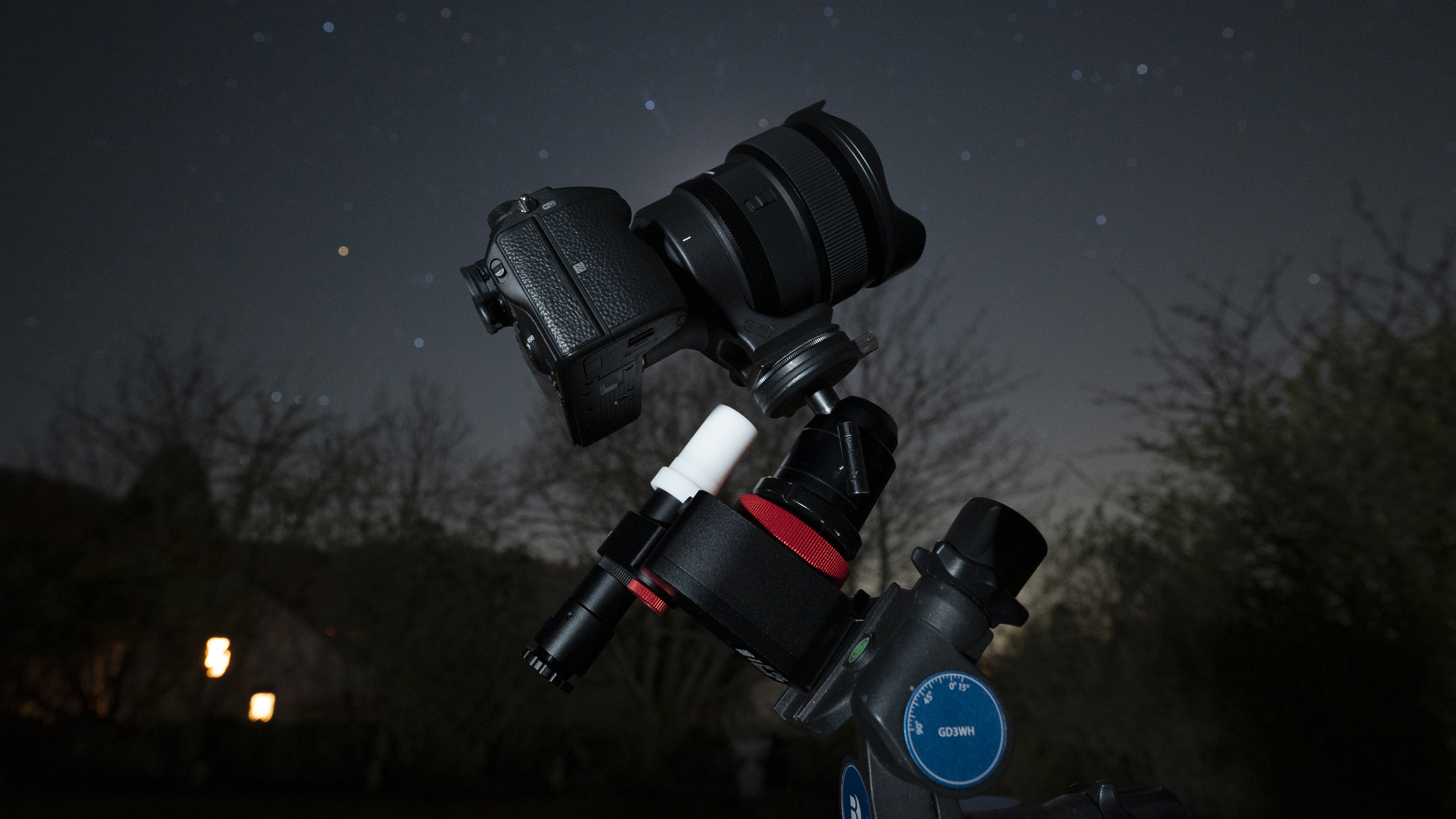
MSM Nomad: Design & Handling
Constructed from CNC-machined Anodised aluminium, provides a quality first impression of the unit and its characterful design. As a single mechanical component, its construction is built to a high-quality standard that is built to last and withstand impact and potential damage during transit.
MoveShootMove prides itself on the key design consideration to provide a portable star-tracker solution - a concept designed for backpackers, capturing images from some of the most remote regions of the world. Size and storage being a key design consideration, MoveShootMove stating, this model is “called NOMAD for a reason”. It is “designed to travel with you wherever you go”.
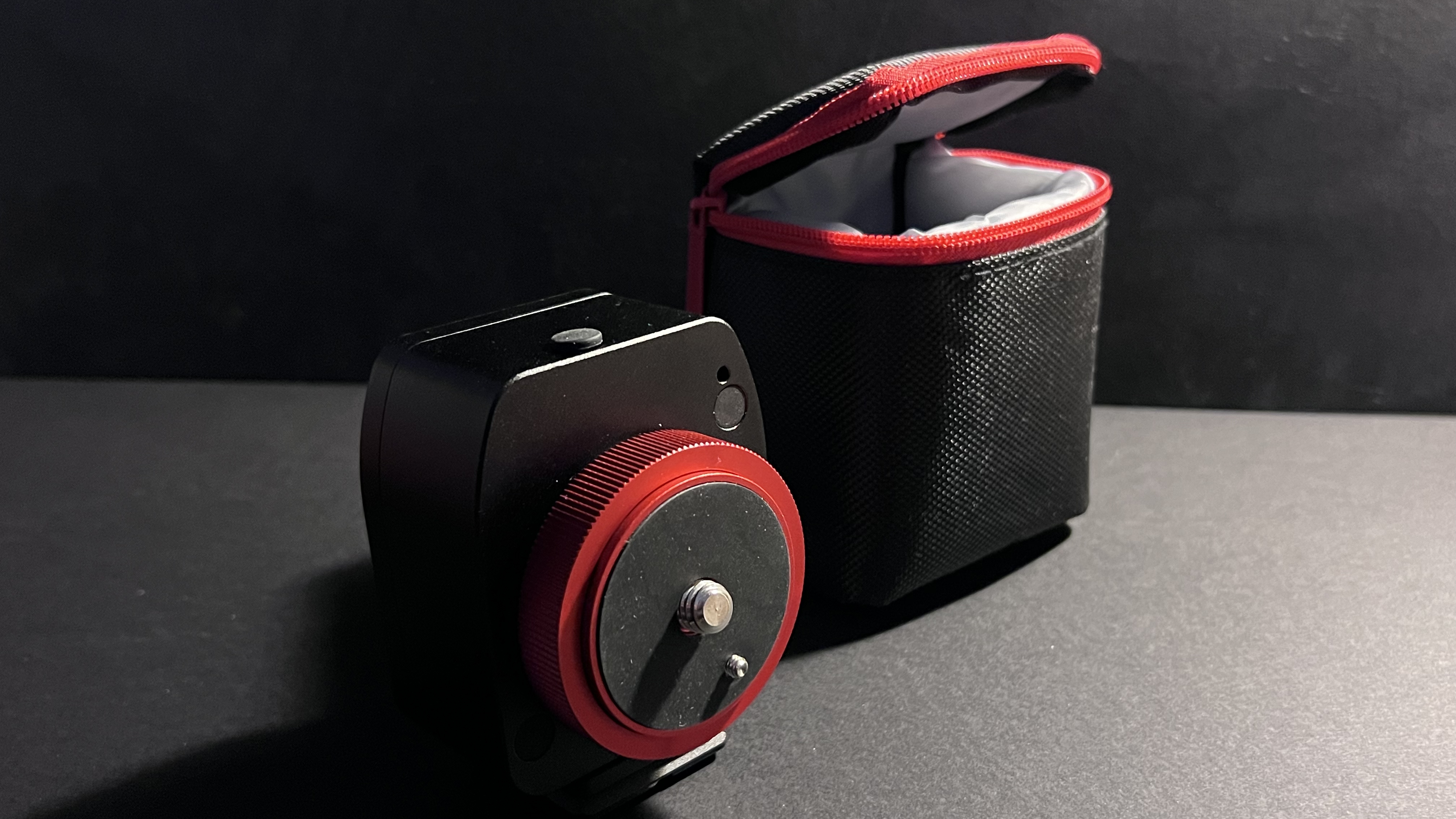
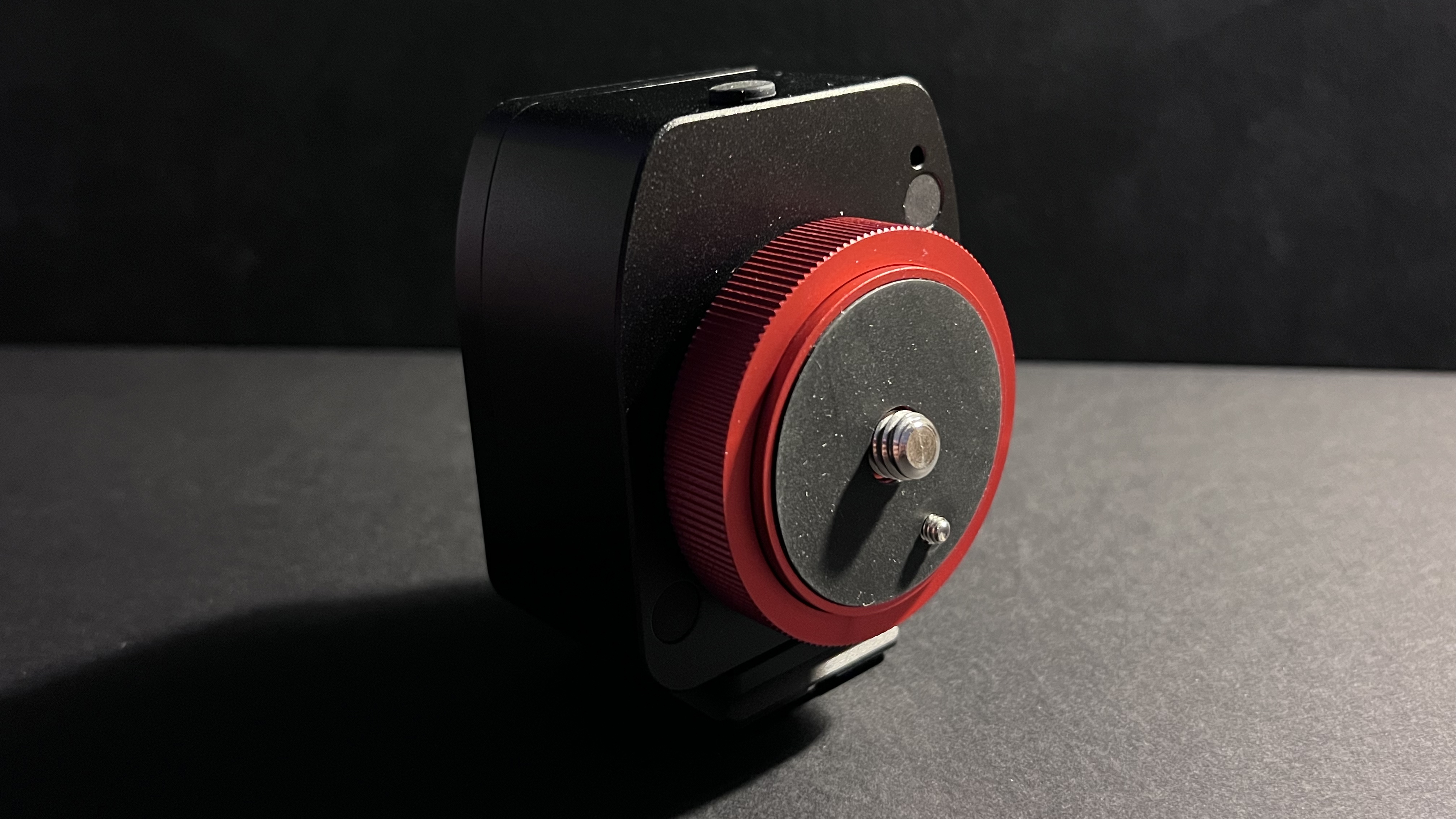
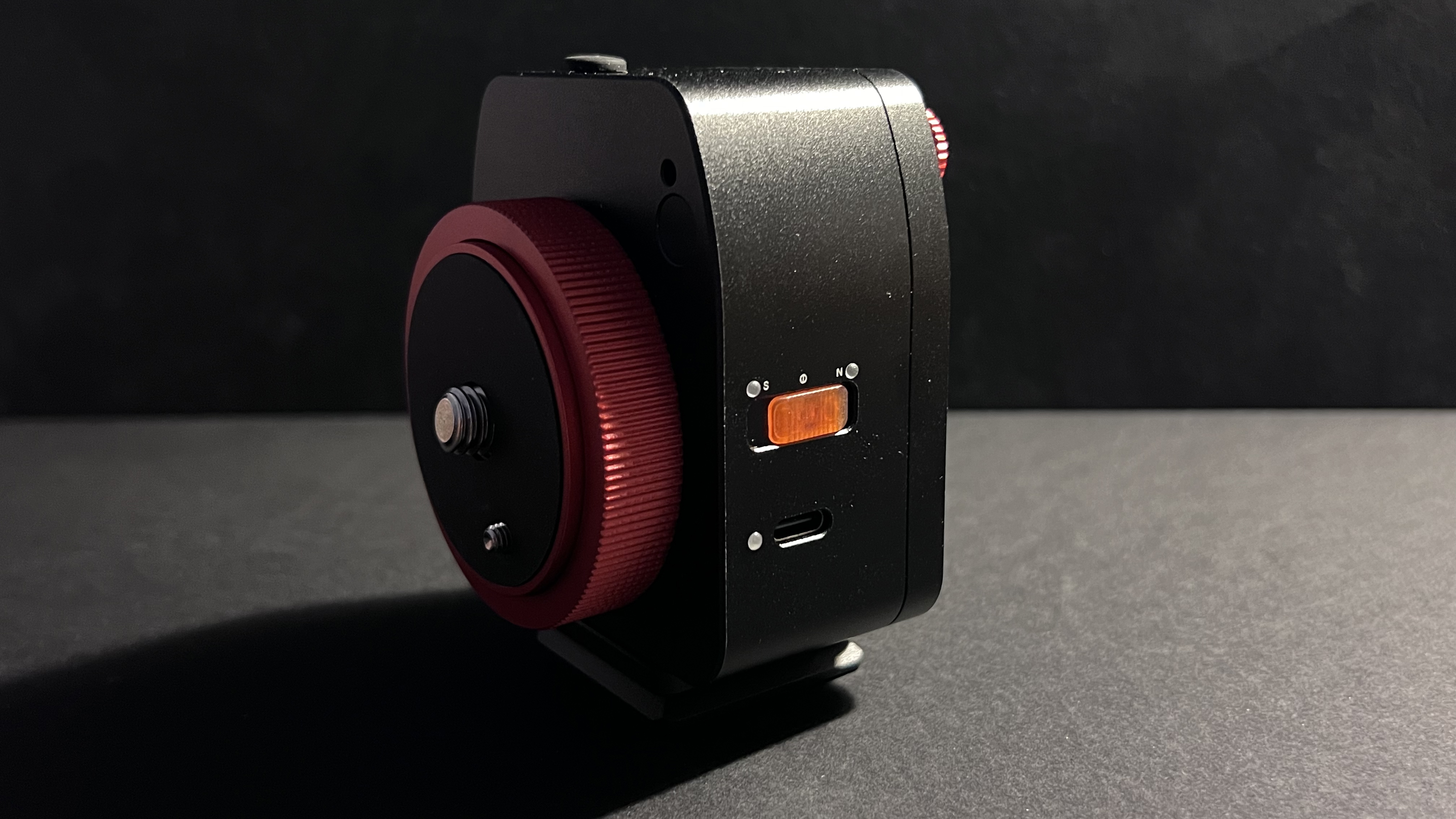
The approach to polar alignment is simplified and rather unique when compared to other star tracking methods. The supplied laser pointer is screwed on to an external mounting bracket on the tracker and further attached to a bracket that houses a polarscope utility. As is the case with any means of polar alignment, some minor knowledge of astronomical objects is required to locate the north celestial pole (NCP - Constellations: Ursa Major and Ursa Minor) for northern hemisphere users, and the south celestial pole (SCP - Constellations: Octans and Crux) for southern hemisphere users. A 24-hour polar clock utility is integrated into the internal polar scope graphic, enabling fine-tuned polar alignment.
Consultation provides instruction in using Nomad alongside the latest astronomy smartphone apps and software, in locating the position of the pole star, Polaris, or Octans on a night of observation. With each hemisphere requiring different methods for polar alignment, MoveShootMove has all bases covered. For the purpose of this review, PS Align Pro was used to locate the North Celestial Pole. A Fluorescent tube is also included, which is attached to the front lens of the polar scope to naturally illuminate the polar clock utility. This provides a unique approach to illuminating the polar clock utility, used to preserve night vision as an alternative option of using a red light source.
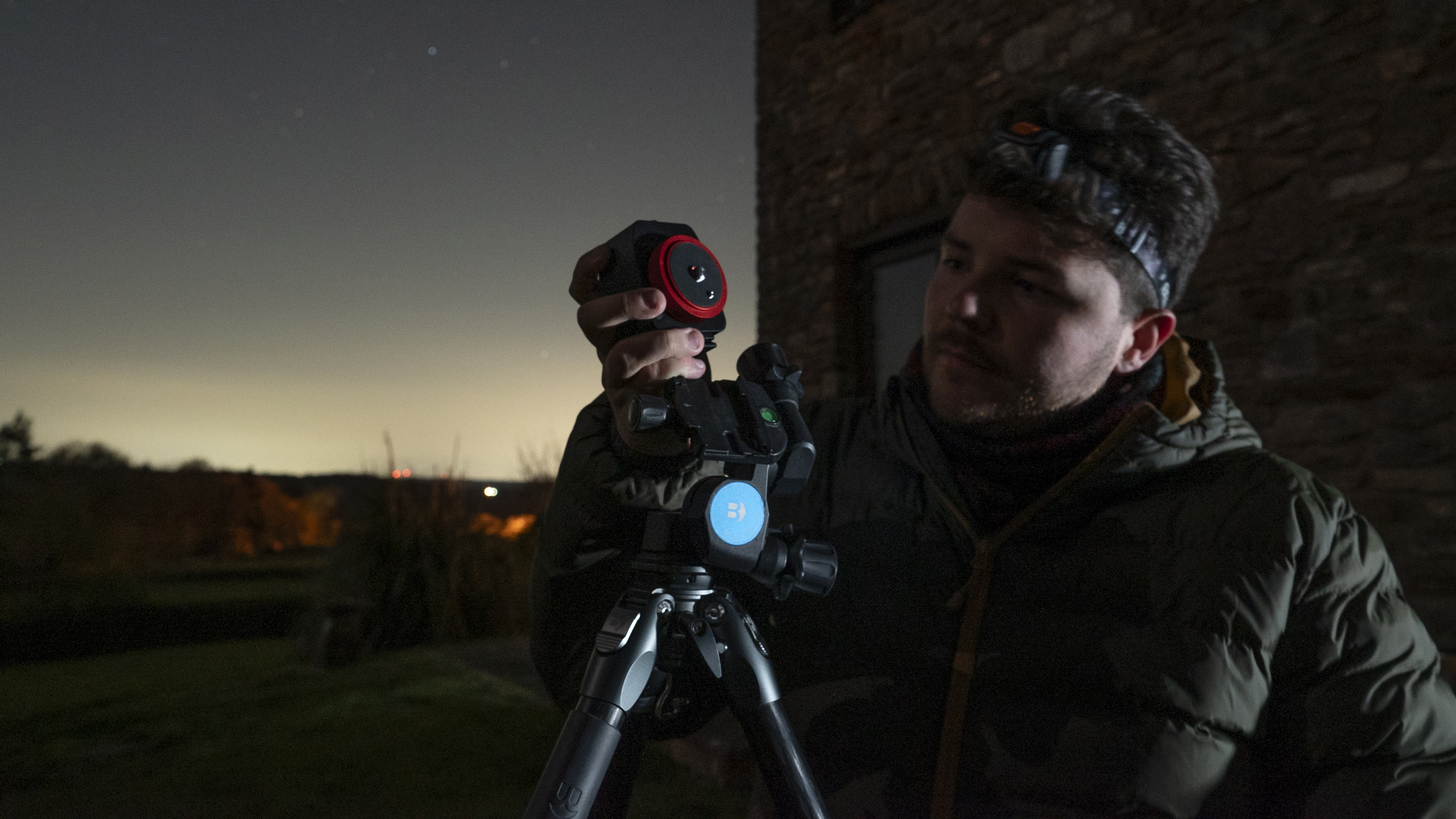
MSM Nomad: Performance
In terms of performance, Kit C was selected for the purpose of this review, with a primary focus on landscape astro-imaging. There are a number of different packages available, depending on your preferred imaging setup, that include optional wedges, Z and V Mounts (which are more commonly used to process Milky Way panoramas), ballheads, unit only, as well as rechargeable headlamps.
Compared to its predecessor, the MSM Rotator - the design consideration required specific weight positioning to keep the ball head secure. This concept has been ‘eliminated’ for the Nomad, allowing for a more user-friendly interface. The unit is attached to a tripod, using an industry-standard quick-release plate that is now fixed in two positions - to prevent unnecessary movement and twisting of the tracker once secured to the mount.
The hardware of the Nomad is built to withstand twice the amount of torque compared to the Rotator model. Offering a payload of up to 7.7lb (3.5kg) is a more considerate design aspect for the use of heavier, wide-angle lenses.
The laser pointer housing has been improved, using the external attachment to screw directly into the tracker and prevent ‘wobble’ during operation. One observation made is that collimation of both the polar scope and laser pointer are required, to provide a central pivot on all axes. This can be tested by fully rotating both the laser pointer and the polarscope around a single fixed point. The position of both the laser and polar scope can be collimated using the hex key supplied. The laser pointer is projected onto a wall space, marking the current position for the laser, applying the adjustment, and turning to the unit to assess movement is central to the projected laser. A similar process for the polar scope. Pointing at a distant object, such as a telegraph wire, can be used as a target when performing minor adjustments. Again, assessing central movement to the polar clock graphic.
For timelapse astrophotographers, however, this is not a design consideration that has but built into the Nomad. MoveShootMove states, this model provides “a solution, as the easiest to use, most portable and inexpensive star tracker”. Targeting both vid and professional astrophotographers. Weighing up the odds of being the easiest to use and most travel-friendly model.
MSM Nomad: Verdict
Overall, I would advocate the MoveShootMove Nomad as the leading example of a portable star tracker option. Not only has the unit been designed with astrophotographers in mind, in terms of versatility, quality, and use, with modern quirks to its design and operation for polar alignment, whilst simplifying the process of alignment to the north celestial pole in a short period of time.
Once familiar with the individual components, it allows for quick setup and teardown times, whilst providing generous tracking capability for the purpose of a landscape astrophotography-style tracker. I would therefore highly commend the Nomad as a firm consideration in my camera bag when out shooting under the stars.
Features ★★★★★ | The NOMAD provides a great selection of accessories that are purposefully and well adapted for modern, unique approaches to polar alignment. |
Design ★★★★☆ | Strong visual aesthetic, portable, hardy design that is compact, well adapted for travelling and lightweight in property. |
Performance ★★★★★ | Good quality tracking, adapted for landscape astrophotography. Supporting a greater payload capacity alongside short setup and set down times. |
Value ★★★★☆ | Rated good compared to other similar models on the market, reflective of its portable design, quality product and size. |
Alternatives
Other similar contenders would be the Vixen Polarie in relation to size, function, and similar price bracket. Or the Skywatcher Star Adventurer Mini, although more bulky in design, offers a star tracker solution more reflective of the Nomad in offering a more precise form of polar alignment.
You must confirm your public display name before commenting
Please logout and then login again, you will then be prompted to enter your display name.
